
Biting into a perfect, tree-ripened peach could be the culinary highlight of your summer. That is, if you know the best varieties to plant: three to four years in advance.
Let’s be honest, it takes some work to grow peaches (Prunus persica). For starters, you have to have some land, or a very large container. Then there’s the matter of patience. It’s an absolute must.
It also takes sunshine, rain and a little bit of pruning to to get to a handful of sweet and fuzzy fruits. However, your growing efforts will be well-rewarded down the line.
At the end of this article, we’ll also tempt you with some peach preserves and a mouthful of other peachy recipes to try.
How To Grow Your Own Peaches
I know, the ultimate goal is to get the most delicious harvests ever, as quickly as possible, but if you’re going to cultivate homegrown fruit, it all begins with a seed or a sapling.
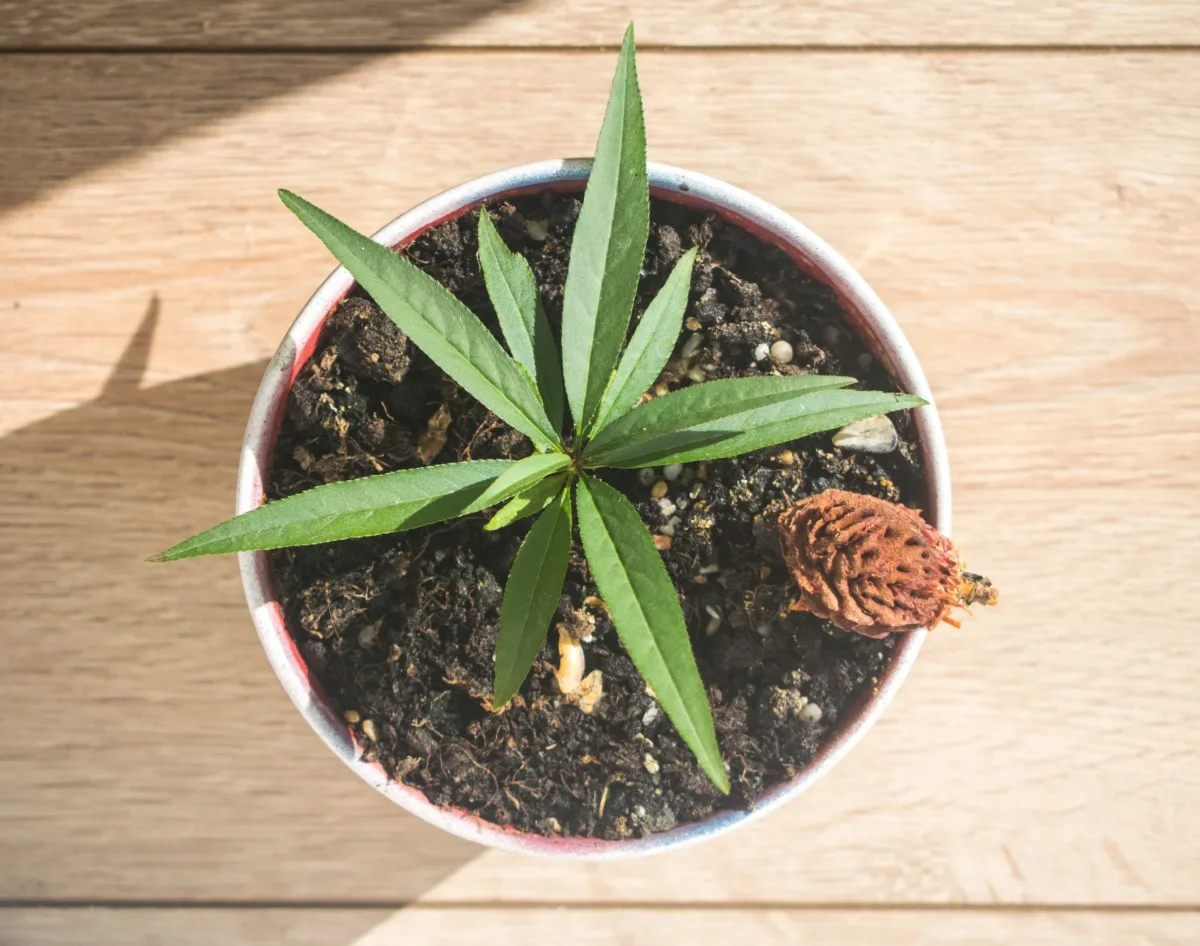
Peaches grown from seed are more similar to their parent stock than apples, cherries, pears or plums will ever be. But it comes with the possibility that they may never bear fruit, or that the differences will be too much to bear. It’s worth giving it a try though, planting a few peach pits, just to see what you get.
Rather than starting your own peaches from seed, you’ll want to start with a grafted rootstock.
And if you aren’t so much into plant propagation, you’re always bound to find a nice selection at your local tree nursery.
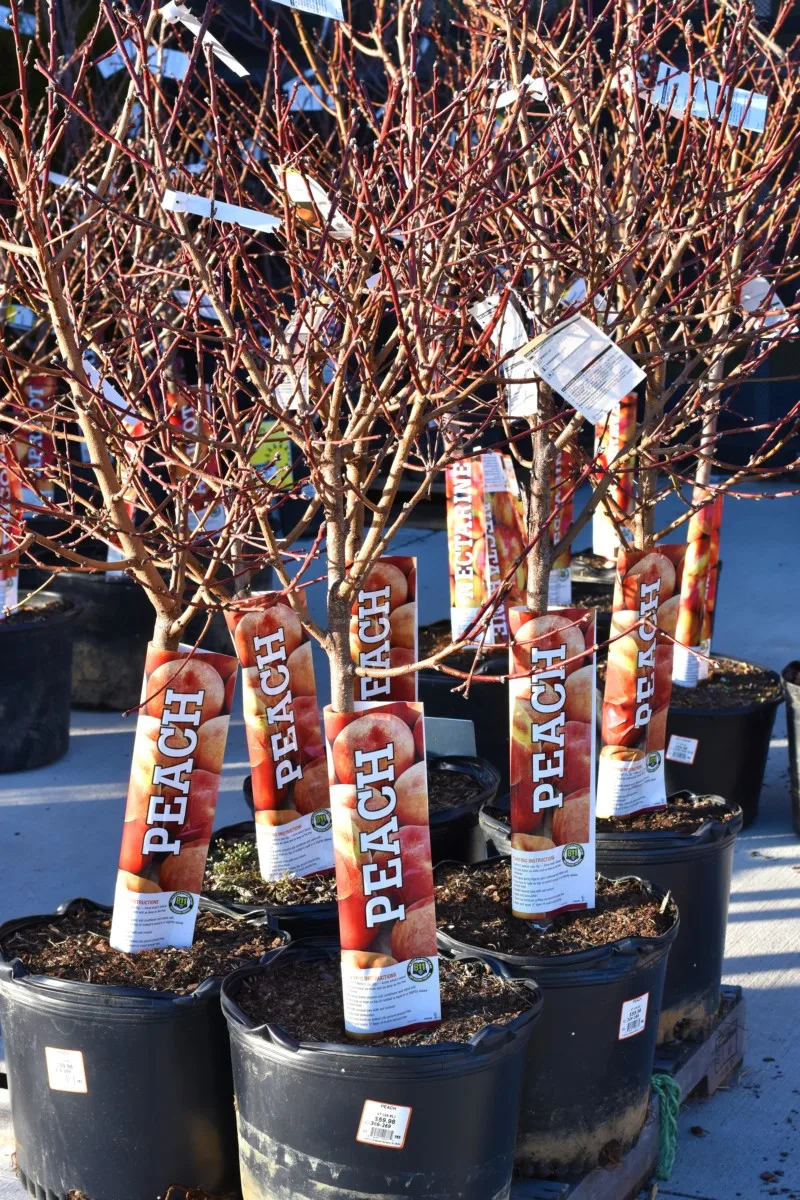
The trick, they say, to growing peaches is to find a variety that suits your climate.
Peach Tree Varieties Worth Growing
Normally, we’d save the talking about varieties till the end, but peaches are a special case. Unlike apples, they won’t grow just anywhere.
Peaches are suitable for growing in USDA zones 4 to 9. However, if you are gardening and growing in zones 6 to 8, your chances of boasting a flavorful crop are increased.
That’s not to say that peaches can’t survive further up north. You may just need to go with a different variety that’s more cold-tolerant, and perhaps just a bit less sweet.
With more than 300 peach varieties in the U.S. and 2000 worldwide, it can be a little overwhelming to figure out what’s the best peach to plant in your backyard.
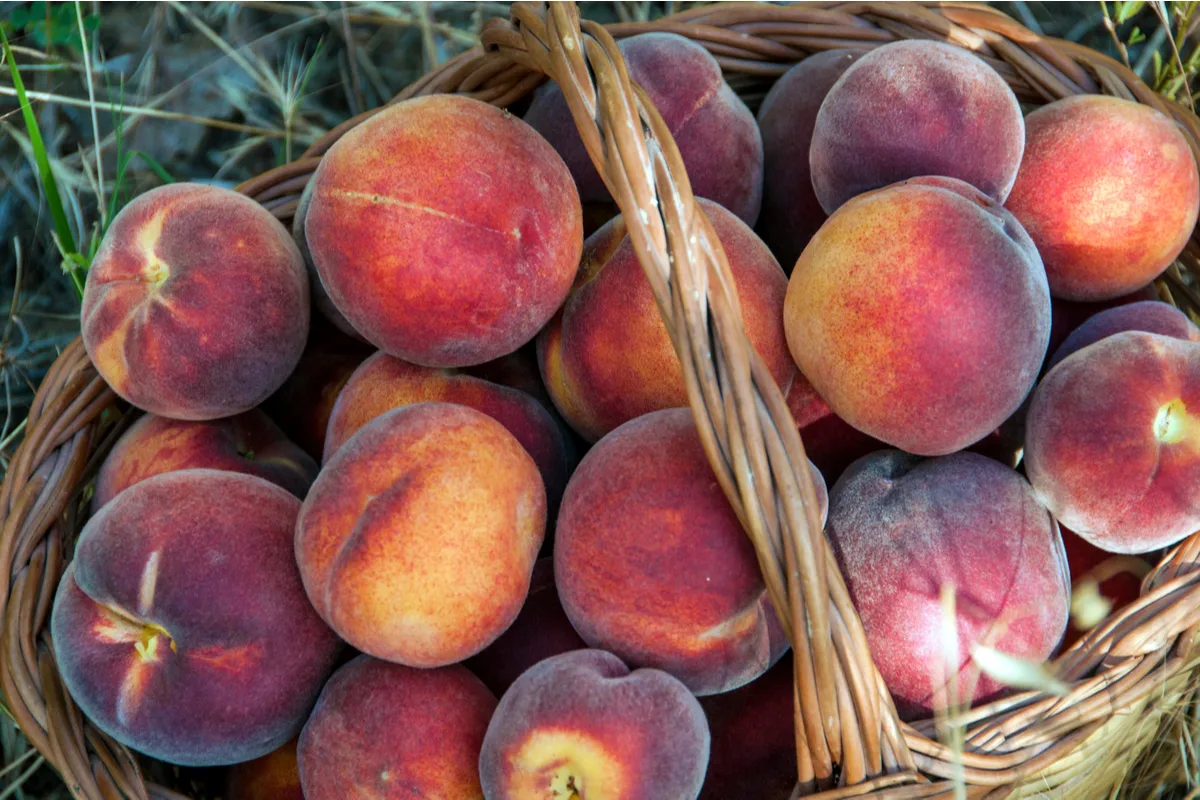
For the record, I’d just like to state that the best peach for you is the one you like to devour. Not only dreaming about flavor, think about how you’re going to greedily polish them off. Fresh, cooked, canned, dehydrated? Don’t think for too long, as peaches ripen fast.
You need to know that there are different kinds of peaches with slightly different properties. Let’s start with the pits:
- Freestone Peaches – these peaches are easier to clean as the pit falls easily away from the fruit, making them easy to slice. Perfect for baking, canning, freezing and fresh eating. They tend to be larger than clingstone peaches and not quite as juicy.
- Clingstone Peaches – as the name suggests, these peaches hold tight onto their pits. It’s totally worth the effort of cleaning them with a knife, or some very patient teeth, as they are among the first peaches to be harvested each season. Color-wise, they contain yellow to bright-red flesh, which is sweeter and juicer than freestone peaches. These make the most perfect peach juice and are often used in peach jams, jellies and even compotes, if the variety is a not so melting kind (see below).
- Semi-Free, or Semi-Freestone Peaches – a multi-purpose peach is one that is juicy and sweet with flesh that is easy to remove from the pit. Semi-free peaches can be used for just about anything from cobblers to peach preserves.
Beyond pits, you also need to think about the texture of the fruit: melting or non-melting.
Melting peach varieties ripen quickly, then turn into a delicious sweet mush in your mouth, or when cooked.
Non-melting peach varieties have a unique quality of remaining firm. This is what you’ll indulge in when you consume a whole jar of sliced peaches in one sitting.
And then, there’s the peach color to think about when choosing a variety.
Yellow fleshed peaches are the most common. They are great for baking, grilling, eating fresh or becoming a highlight of a meat and cheese platter.
White fleshed peaches are more of a rarity and that’s what makes them special. They are less tart, with more sugar packed in their cells. Best for adding sweetness to salads, peach sodas and syrups.
Best Peach Varieties To Grow At Home
The best peaches are always harvested at their peak. We’ll return to this thought a little later on, when talking about how and when to harvest peaches.
With so many to choose from, it’s really hard to know what you’ll like, but here are 10 varieties to help you get started on your search:
- Red Haven
- Fiesta Gem
- Galaxy
- Sweet Bagel
- Snow Beauty
- Gala
- Gold Dust
- Early Amber
- July Prince
- Dixie Red
Once you’ve decided on a variety, now it’s time to get that sapling in the ground.
How To Plant A Peach Tree
Peach trees, like most other fruit and ornamental trees, should be planted in late winter to early summer while the tree is dormant.
In really cold climates where the ground freezes, wait until the soil thaws before planting.
Basically, you plant a bare root peach tree, just as you would plant a plum tree.
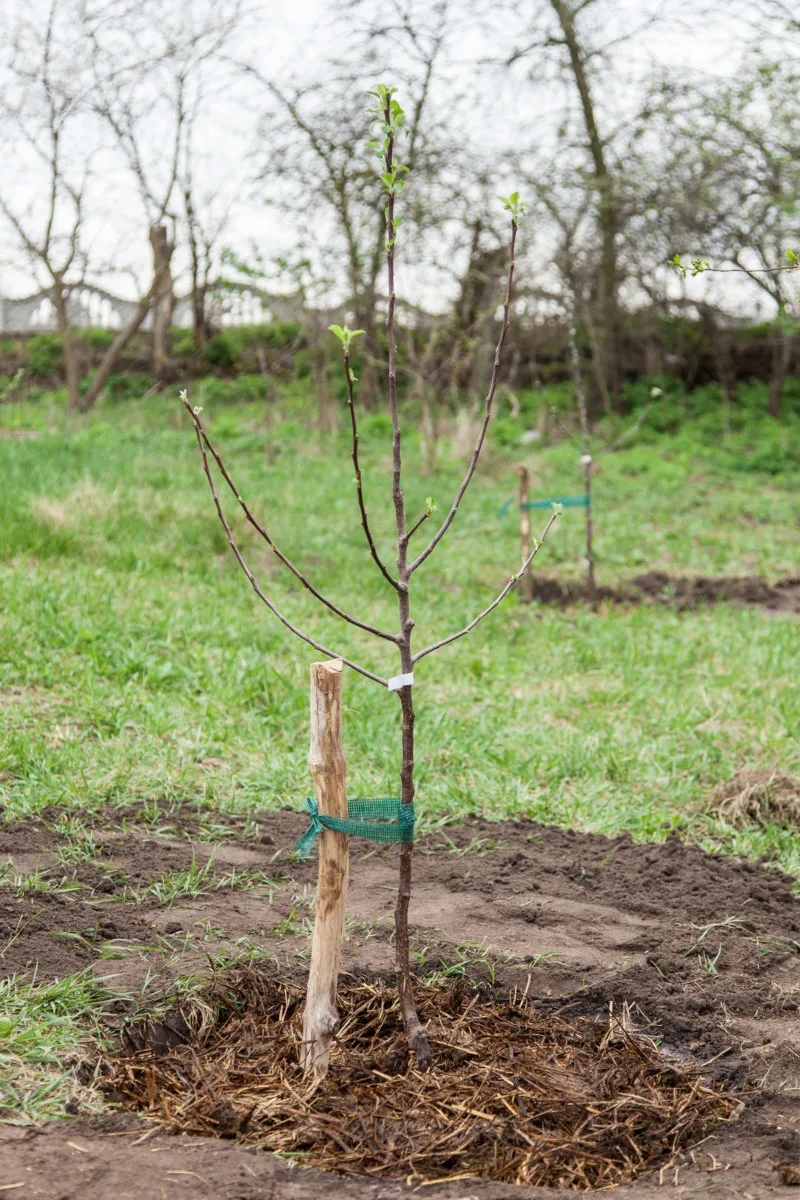
Dig a large enough hole, add some compost or well-rotted manure, then cover the roots back up with soil and water. Easy enough, right?
One word of advice: plant your bare root stock as soon as possible after purchasing it. Even the same day. Take care to reduce the amount of stress that the tree is going through, and you’ll be amazed at how well your new peach tree takes to your backyard.
Container-grown trees can wait a little longer before planting.
Choosing A Peach Planting Site
You probably already know that peaches like a lot of sun; make sure to put them in a place where the sun shines for a minimum of 8 hours.
What you might not have heard, is that morning sun will help to dry the morning dew off the peaches. So, if they get some morning sunshine as well, they’ll be loving that.
Soil should be well-draining, never compacted or wet. As far as pH goes, peaches prefer soil that measures between 6 and 6.5.
Another thing of concern is frost. Avoid planting peaches in areas where there is a depression, as frost will settle there first. Always plant on higher ground or close to a building, especially in the case of planting a dwarf peach tree.
In an orchard setting, peach trees should be planted 15-20 feet (5-6 meters) apart.
How To Take Care Of A Peach Tree
As most peaches are self-fertile, you’ll only need to plant one tree to receive a harvestable crop.
However, if you have the space to grow, go ahead and plant two or three if peaches are among your favorite fruits. In this case, you may want to plant different varieties for more diversity in flavor and time of harvest.
Fertilizing Peach Trees
Young peach trees should be watered with a (10-10-10) fertilizer the first time about a week after planting. Then a second time about 6-8 weeks after planting. As long as the fertilizer is balanced, your peaches will be happy. Even with a (12-12-12) or (20-20-20) fertilizer. Only fertilize in spring and mid-summer, never in fall.
When fertilizing fruit trees, never apply the fertilizer right at the base of the tree. Instead, water it in a bit further out, about 8-12 inches (20-30 cm) from the trunk.
It’s not necessary to overdo it either. Newly planted peach trees should receive no more than 1/2 cup of fertilizer per tree. A fully mature tree will need no more than 5 pounds of fertilizer in a single application.
If your peaches are producing too much foliage and not a lot of fruit, be sure to cut back on the nutrients next year.
Pruning Peach Trees
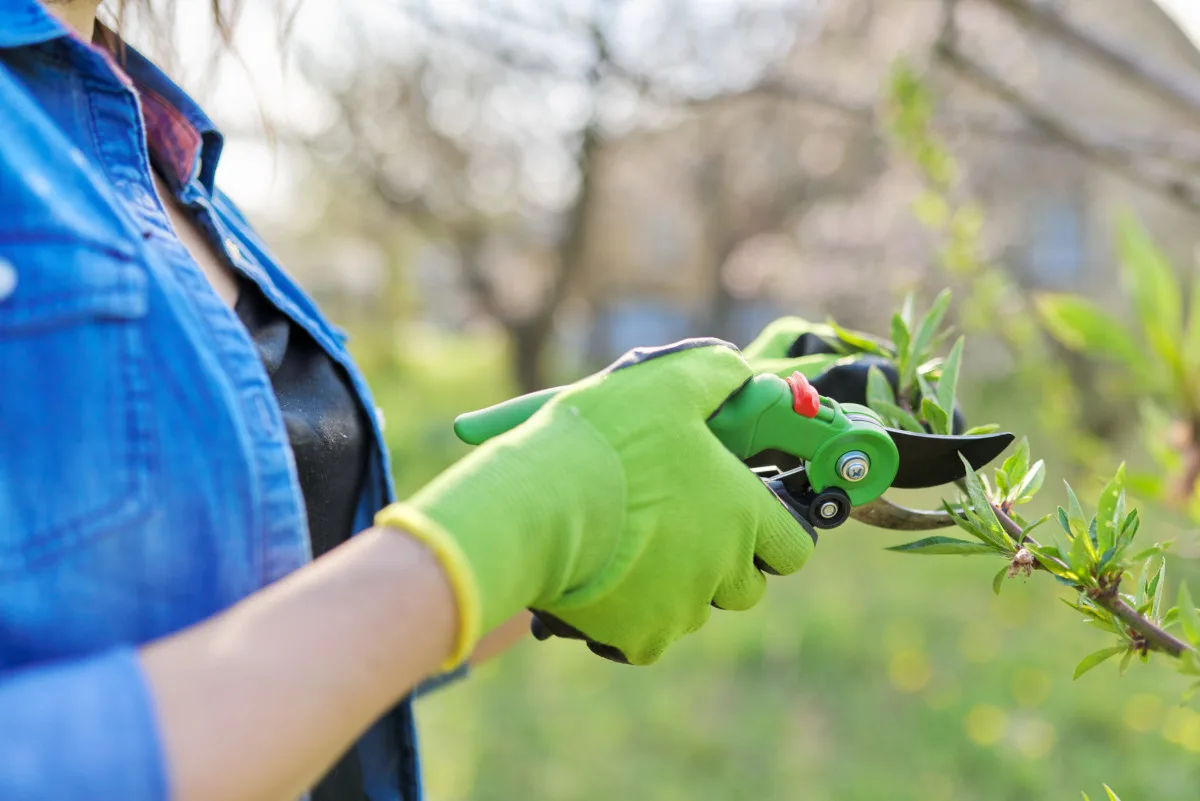
It’s not optional to prune peach trees, it’s an absolute necessity. If left untouched for several years, peach trees are prone to several diseases. At the same time, their branches will bear fewer and fewer fruit with each passing season.
The process is simple: first remove dead, damaged or diseased branches in spring, before the blossoms appear. In other words, prune while they are still dormant.
Next, you need to remove suckers and check for crossing branches. Remove those as well to open up the canopy, allowing for better airflow and light penetration.
It’s wise to know that peaches bear fruit on second-year wood. So, the aspect of keeping your peach tree compact and the fruit reachable is an important one. If you want to eat fruit from your peach tree, yearly pruning is necessary.
Watching Our For Potential Problems
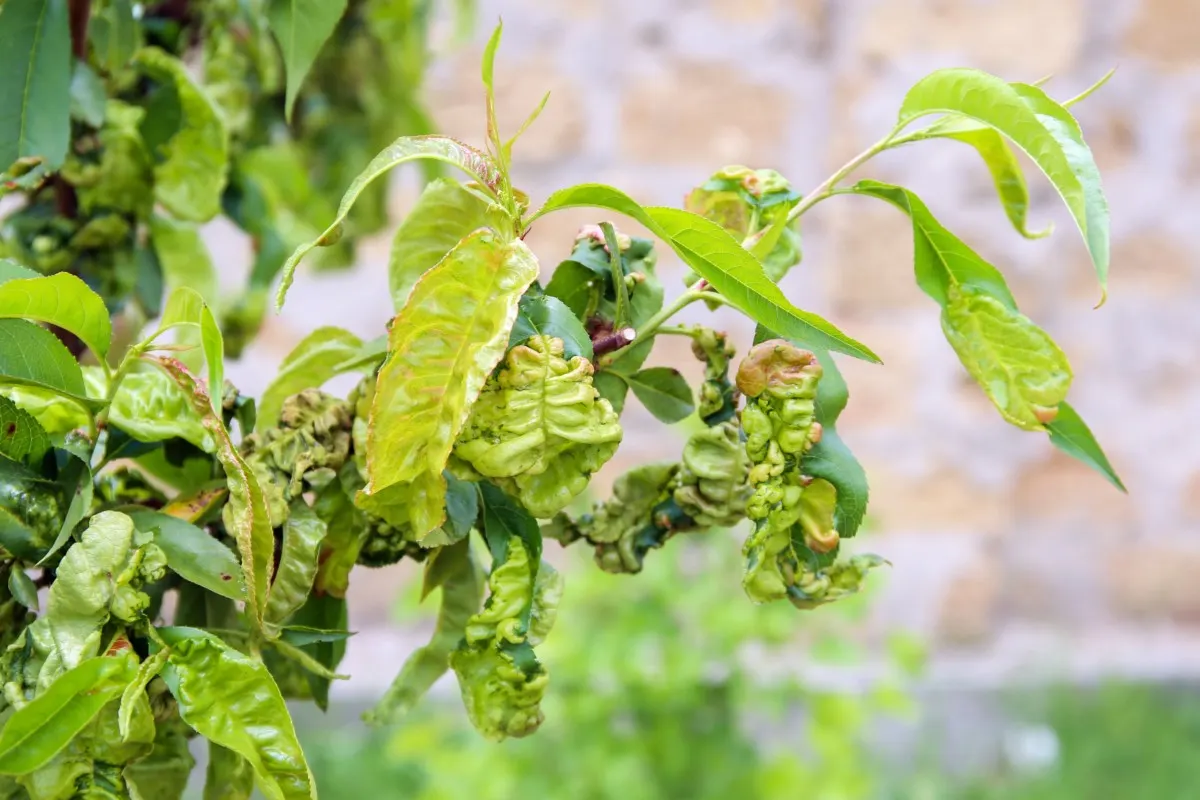
Peaches aren’t the easiest fruit to grow, yet they aren’t the most difficult either. I suspect they are somewhere in between. In reality, it all depends on how much fruit tree growing experience you have.
Peaches have many potential pest problems, though you may never see them at all:
- brown rot
- peach scab
- bacterial spot
- peach leaf curl
- gummosis
- powdery mildew
- crown gall
None of these are things to be scared of, just to be aware of.
If you’ve done a good job of pruning and the weather conditions are favorable, you’ll be ready for a mouthwatering harvest anytime from late June through August.
How & When To Harvest Peaches
Peaches hand-picked from the tree at the right time are beyond heavenly.
They are nothing like the unripe fruit you get from a store; tree-ripened peaches are the most tempting fruits you could ever imagine.
You’ll have to watch and wait, maybe even sample a few peaches to know when they are just right.
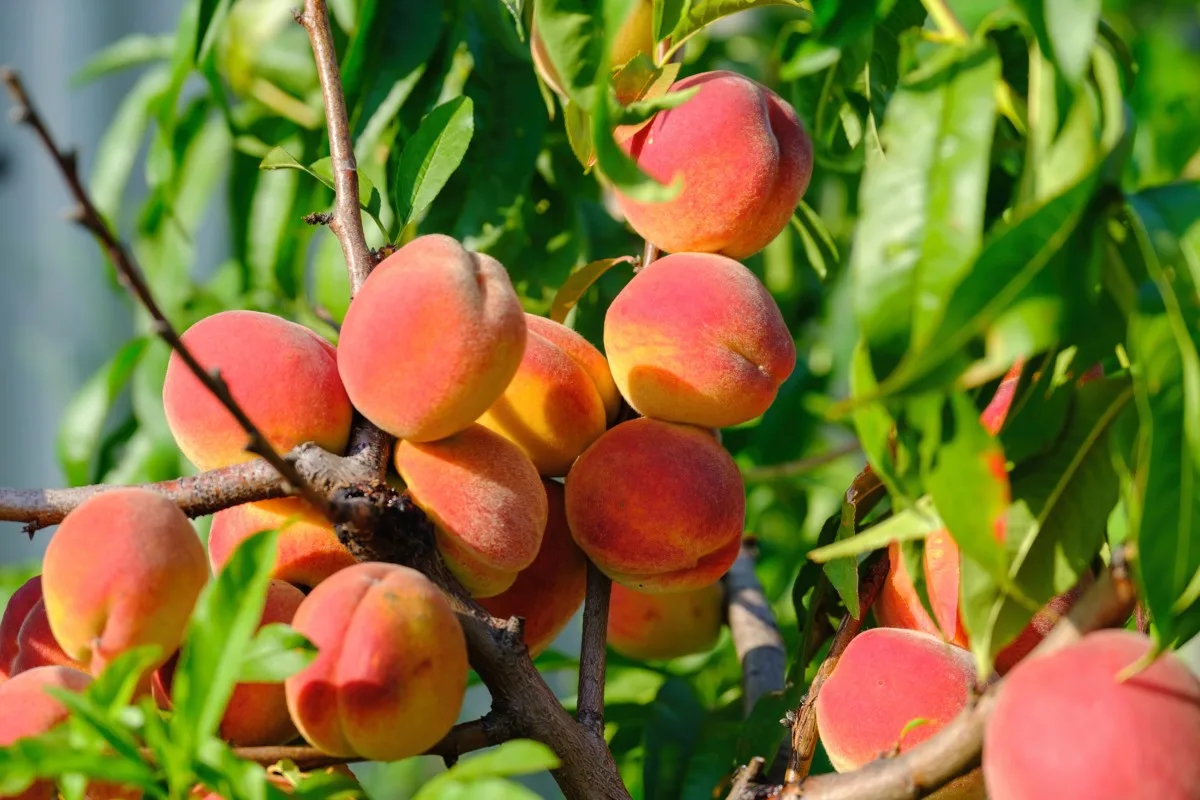
You can also go by color if you know from past experience what variety you have growing in your backyard. Basically, ripe peaches have that orangey-yellow peachy color, no green should be left on them at all.
And when you pluck the peaches from the tree, they should come off with a slight twist. If they are hanging on a little too tight, wait another few days and try again.
Peach harvesting tip: the outer fruit on the tree, as well as the fruits at the top, ripen first. Don’t even think about harvesting them all at once.
Another reason to pick peaches directly from the tree is that ripe fruits may bruise easily. This depends on the variety, but it’s worth using caution when ripping from the branches.
A Couple Of Tricks To Storing Peaches
Handpicked peaches harvested in their prime will last a fleeting number of days before they must be eaten.
Peaches picked before their prime will last a bit longer, though you’ll need to ripen them in paper bags to truly enjoy their flavor.
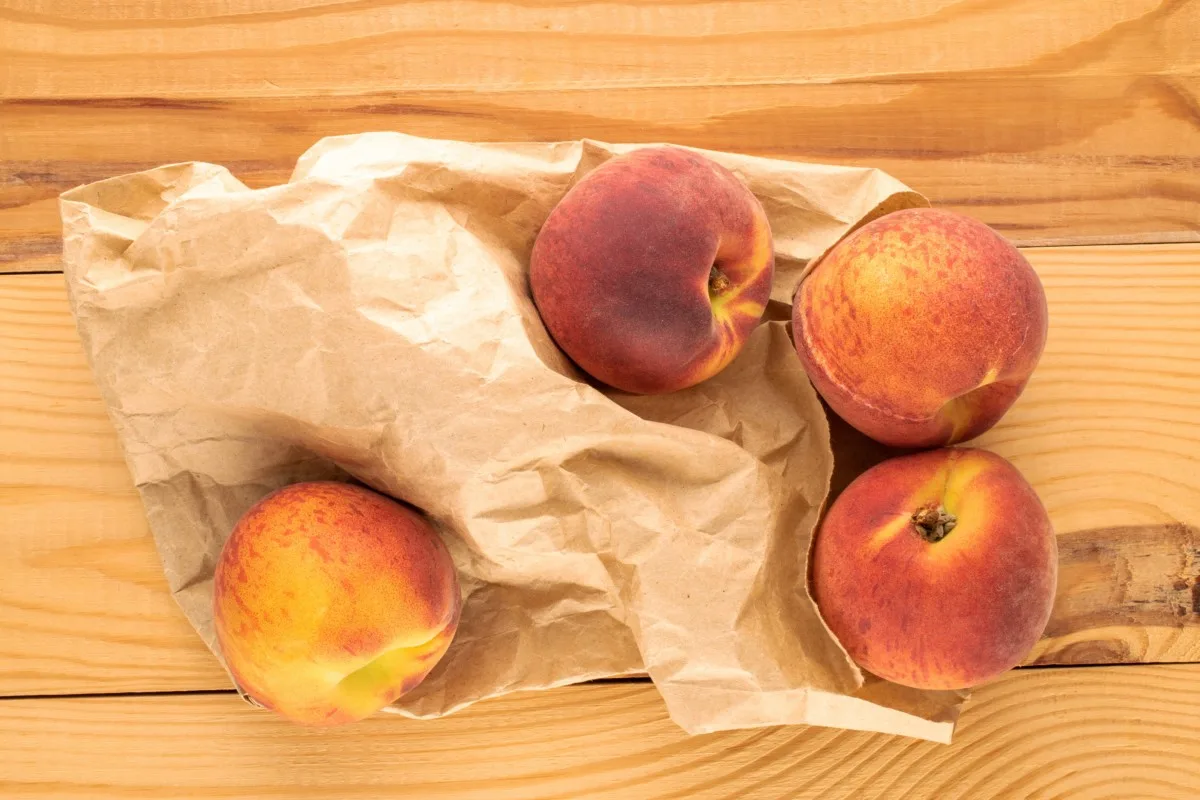
Short-Term Storage
In the fridge, ripe peaches can be stored for a maximum of 5 days. Anything beyond that and they are better used for cooking than fresh eating.
If you have more fresh peaches than you can willfully eat at once, consider making up a small batch of peach butter or peach jam. Or make a peach cobbler and freeze half of it, unless you can eat that all at once.
Long-Term Storage
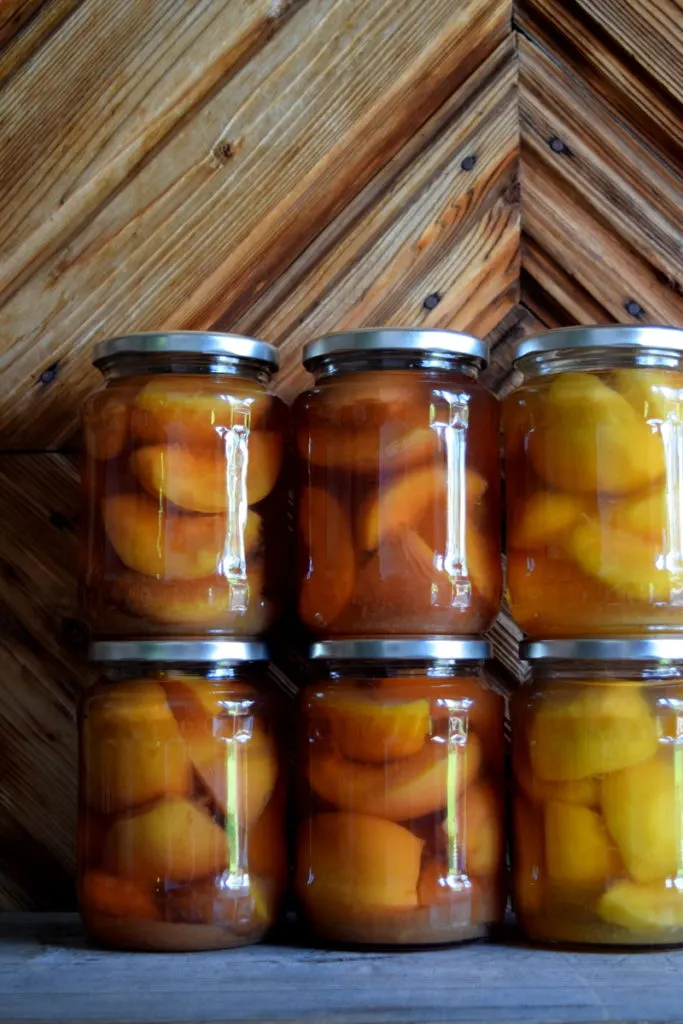
For long-term storage, canning peaches is definitely the way to go. That is, if you are already into canning and preserving.
Peaches also lend themselves well to freezing. They retain both flavor and color, even shape, if you’ve chosen the right peaches. Frozen peaches can be used in soothing smoothies, tasty crumbles and crisps and your morning bowl of oatmeal. You don’t even need to use sugar or any other sweetener when you freeze your peach slices. They are perfect just as they are.
Peachy Keen Recipes
The best way to consume peaches is to eat them fresh from the tree, with sweet juice dripping down your chin and onto your bare feet. But you can eat way more peaches at once by cooking with them.
If your harvests are abundant, or you get a little too carried away at the farmers market, here are some delectable ways to use up more than one or two peaches at a time:
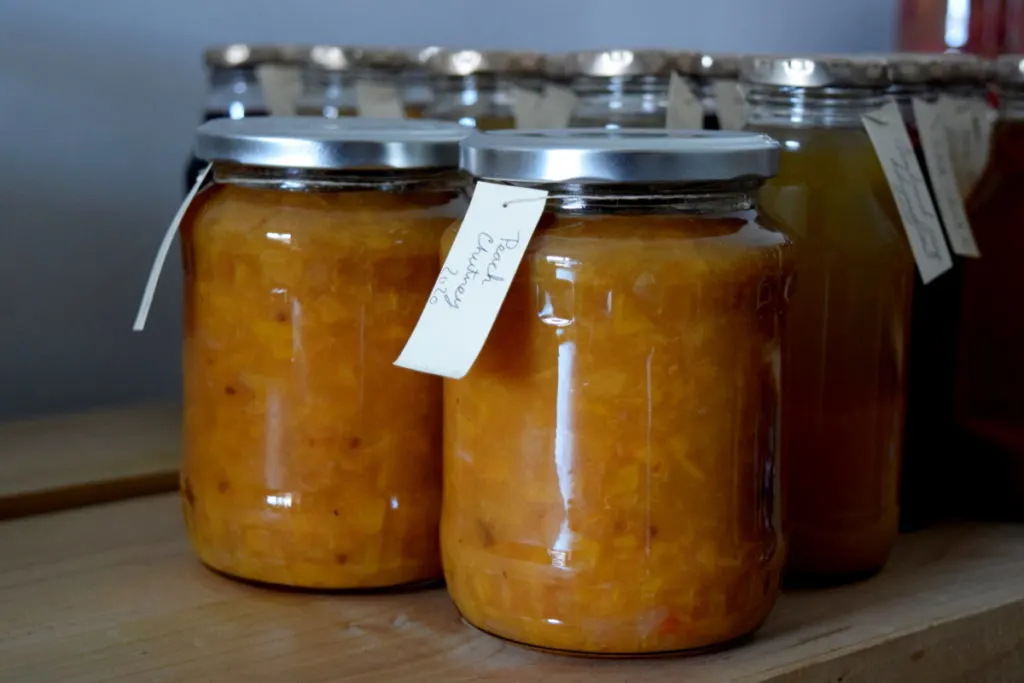
- Peach Ice Cream from House of Nash Eats
- Best Peach Cobbler from Pinch of Yum
- Best Ever Paleo Peach Crisp {Vegan, Gluten Free} from Paleo Running Momma
- Homemade Fresh Peach Salsa from Modern Meal Makeover
- Peach and Burrata Caprese from Delish
- Fresh Peach Chutney from It’s Not Complicated
- Canning Peaches In Light Syrup from Rural Sprout
If you are feeling overwhelmed with too many peaches on your hands (that’s a problem we’d all like to have), you can always freeze peaches too. Whole, de-skinned and chopped, or puréed, whatever way they fit into your freezer.
You’ll always be able to find peaches at the store, but with homegrown peaches tasting so much better, it’s time to think about planting your own trees. In the meantime, eat up all the peaches you can, trying out as many recipes as possible to further your knowledge of this delectable fruit.

Get the famous Rural Sprout newsletter delivered to your inbox.
Including Sunday musings from our editor, Tracey, as well as “What’s Up Wednesday” our roundup of what’s in season and new article updates and alerts.

